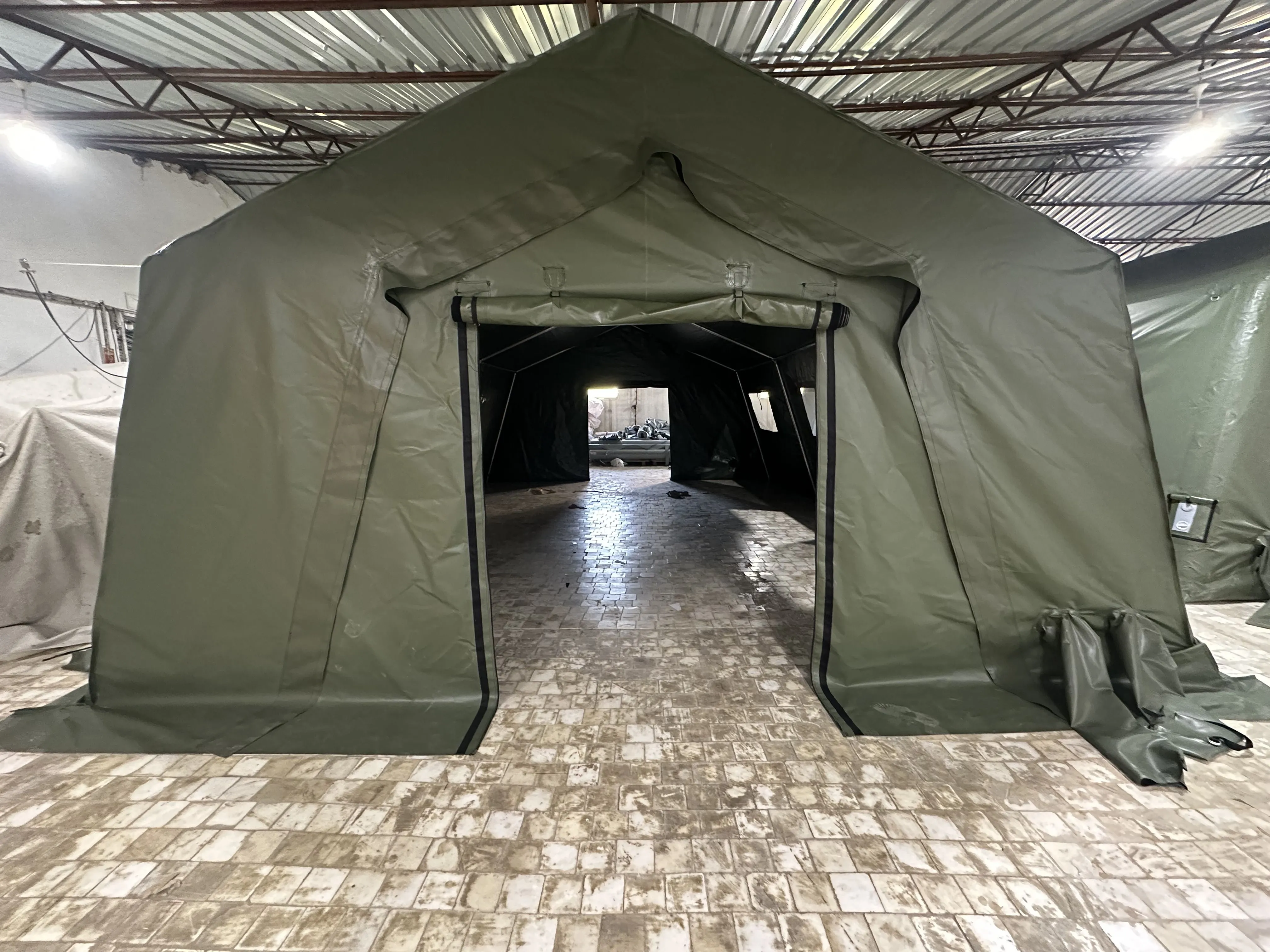
NATO Military Tent
NATO military tents are designed to meet the joint operational, logistics, and accommodation needs of NATO member countries' armies and manufactured in accordance with specific standards. These tents are specifically manufactured to ensure military personnel can continue their duties even in the most challenging geographical and climatic conditions. Key Features: The salient features of NATO-standard military tents are:
Durability: They offer high resistance to environmental factors such as wind, rain, snow, and UV rays. Their fabrics are made of materials resistant to tearing, abrasion, and wear, while their frame systems are generally made of stainless steel or high-strength alloys.
Fast Setup and Dismantling: This feature, critical for operational flexibility, allows tents to be set up or dismantled very quickly by a small number of personnel. Inflatable tents offer a significant advantage in this regard.
Modular Structure: Many NATO tents feature a modular design. This allows tents of different sizes to be connected together to form large complexes suitable for various purposes, such as command centers, infirmaries, shelters, or storage. Insulation: They have thermal and sound insulation properties to provide a comfortable interior environment in both hot and cold climates. This is crucial for the productivity and health of personnel.
Camouflage and Stealth: They are generally produced in NATO green, sand beige, or various camouflage patterns to blend in with the natural terrain. This reduces the risk of the tents being detected by enemy elements.
Fire and Water Resistance: The fabrics are flame-retardant or flame-retardant to protect against potential fire risks. They are also completely waterproof.
Chemical, Biological, Radiological, and Nuclear (CBRN) Protection: Some specialized tents can be equipped with special filtration and sealing features to protect against CBRN threats.
Uses
NATO military tents are used for a wide variety of missions:
Command and Control Centers: These are areas where operations are managed and communication and coordination are maintained.
Personnel Accommodation Areas: They meet the accommodation and rest needs of soldiers.
Field Hospitals and Infirmaries: They are used as mobile medical units providing emergency medical intervention and treatment services.
Warehouse and Logistics Areas: Used for storing logistics materials such as weapons, ammunition, food, and fuel.
Maintenance and Repair Hangars: These are protected areas where vehicles or equipment are maintained and repaired.
Suppliers and Manufacturers
There are companies that produce military tents to NATO standards, such as the Sesa Tente Tent Factory. These companies are generally defense industry companies or manufacturers of specialized tent systems. NATO countries generally source their tent supplies from these companies or their own military logistics units. There is also a Sesa Tente Tent company in Türkiye that produces tents to NATO standards. If you have a specific project, you can learn more by visiting their websites or contacting them directly.

.webp)


